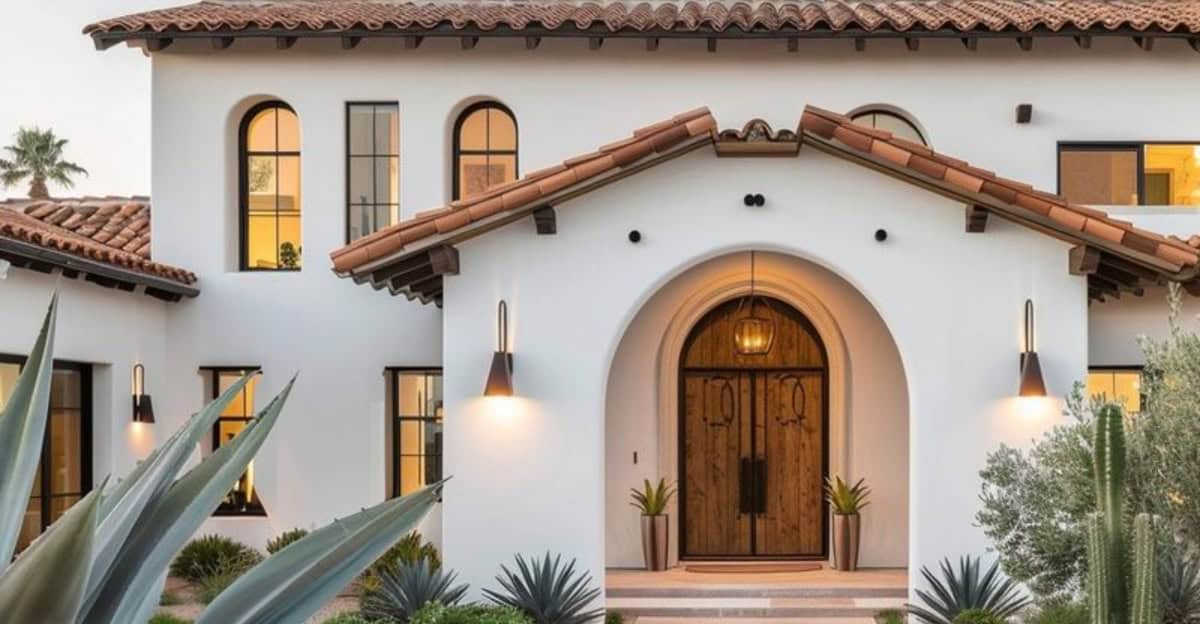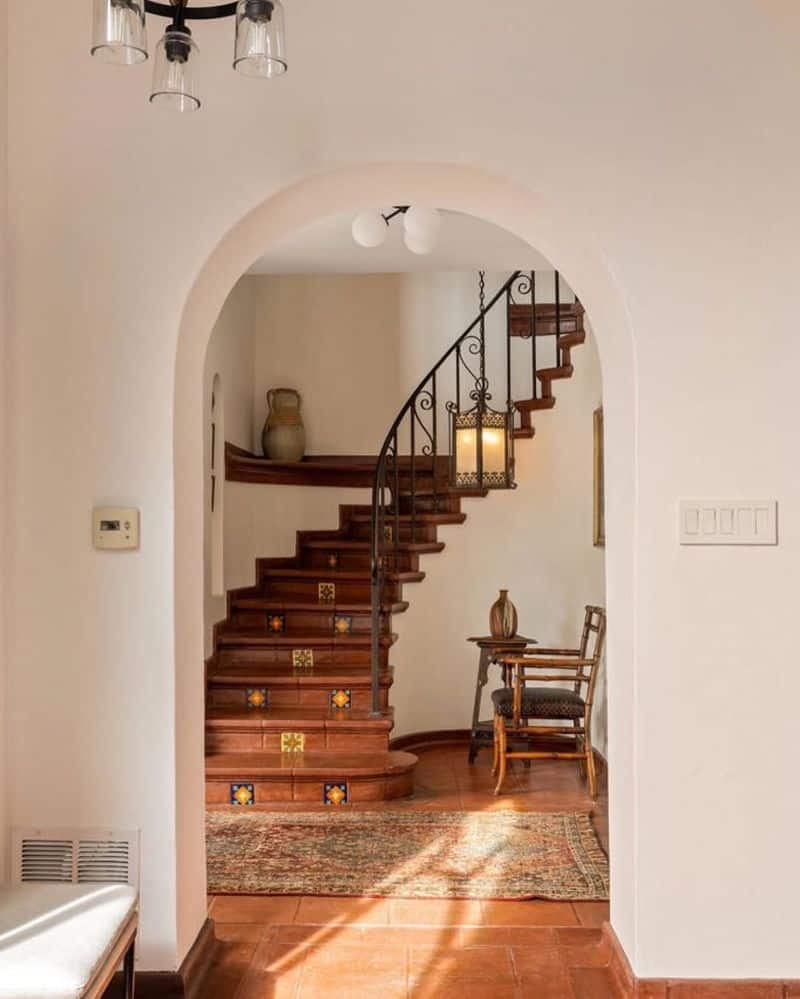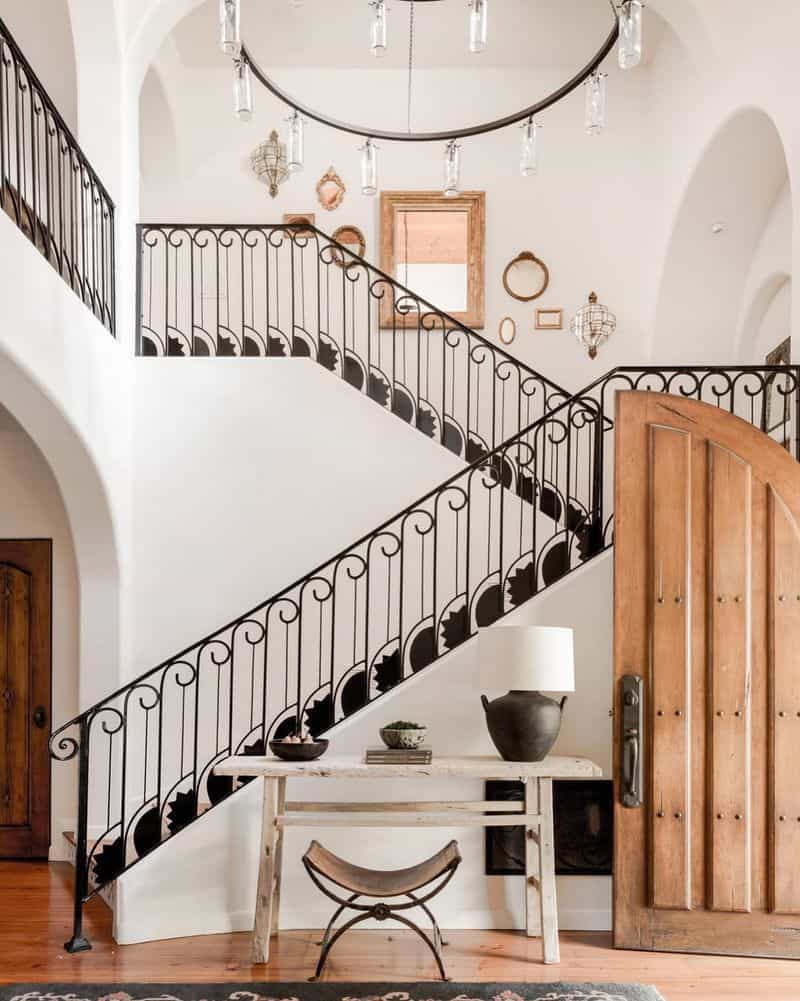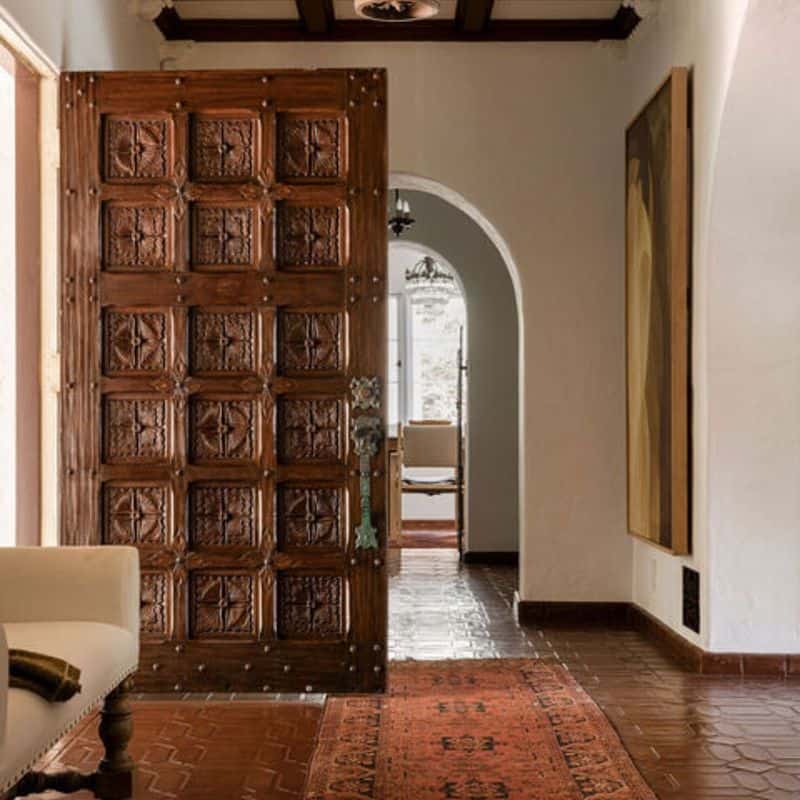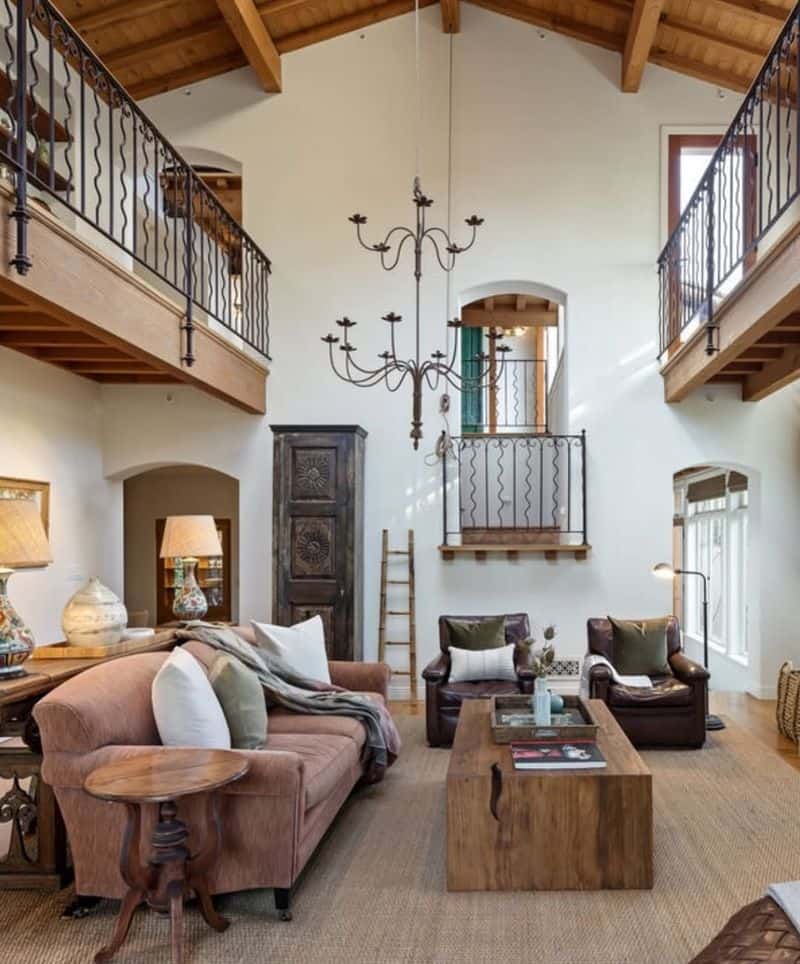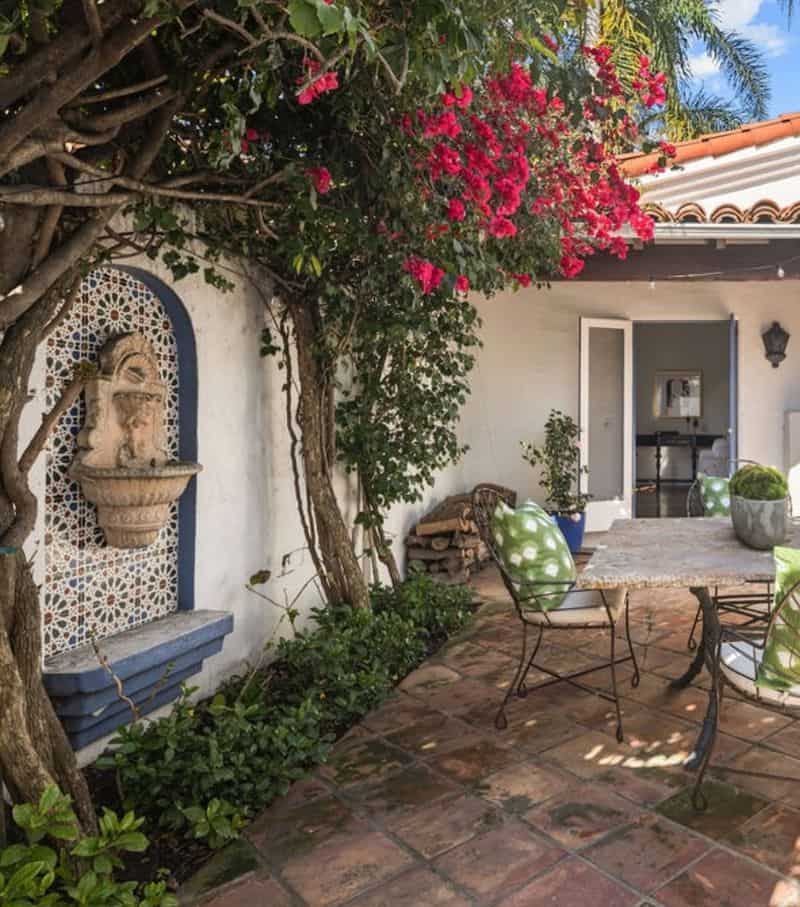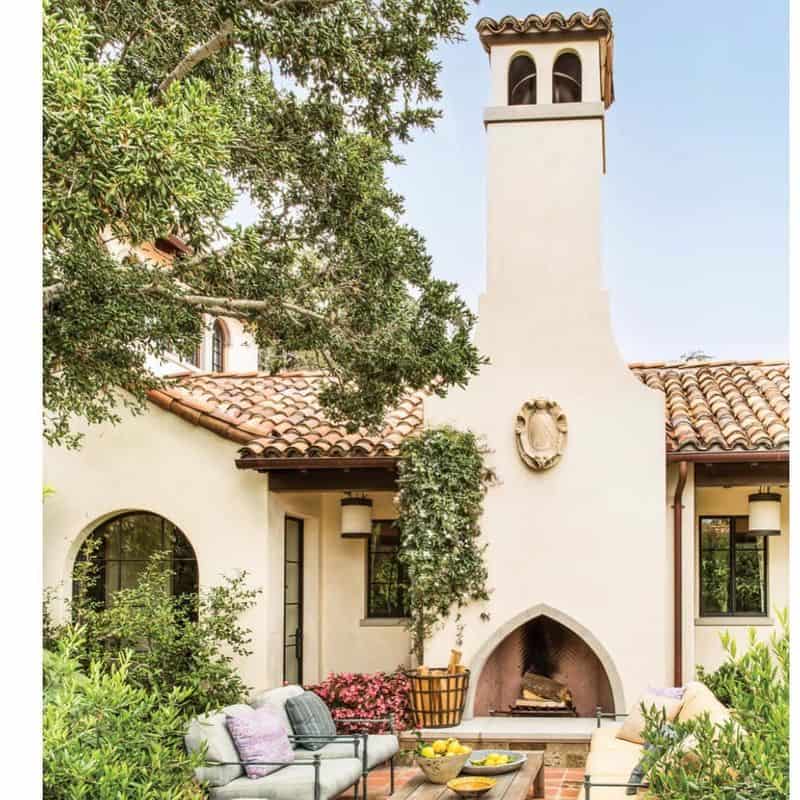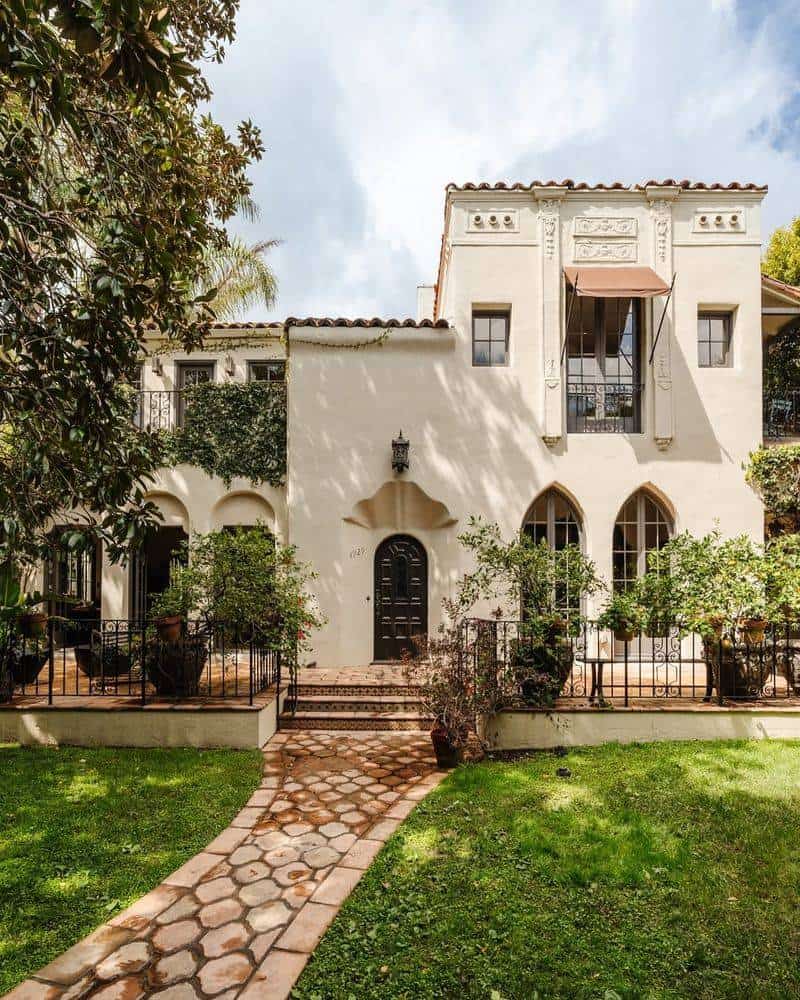Spanish Revival Architecture, with its rich history and timeless appeal, is making a resurgence in modern design.
Known for its romantic and eclectic style, this architectural approach combines elements that bring warmth, color, and character to any space.
From iconic red clay roofs to intricate wrought iron details, each element plays a vital role in creating the charming, old-world ambiance that defines Spanish Revival.
Whether you’re looking to remodel your home or simply appreciate the artistry, these 10 key elements will guide you through the enchantment of Spanish Revival architecture.
1. Red Clay Tile Roofs
Red clay tile roofs are more than just an aesthetic choice; they are steeped in tradition and practicality.
These curved tiles, reminiscent of rolling hills, align perfectly with the Mediterranean landscape. Their rich, earthy hue contrasts beautifully with the white stucco, creating a striking visual harmony.
Functionally, clay tiles excel at protecting homes from Spain’s intense sunlight, providing natural insulation.
This roofing choice is like wearing a stylish hat, both shielding the home and enhancing its allure.
The rhythmic pattern of the tiles adds a musical quality to the architecture, playing a symphony of shapes and shadows.
2. Arches and Curves
The allure of arches and curves in Spanish Revival architecture lies in their ability to soften spaces and inspire movement.
These elements guide the eye, inviting exploration and creating a fluid connection between inside and out. Picture a grand archway leading to a sunlit courtyard, its form both welcoming and majestic.
Curves extend beyond doorways and windows, influencing everything from ceilings to staircases. They are like the gentle waves of a sea, bringing a calming effect to the environment.
These shapes are not merely design choices; they reflect a philosophy of harmony and grace.
3. White Stucco Walls
White stucco walls are the canvas upon which the vivid tapestry of Spanish Revival architecture is painted.
These walls, with their chalky, textured finish, create a clean yet rustic look that exudes a timeless elegance.
Imagine the sun casting gentle shadows across their surface, enhancing the natural beauty of your home. This classic choice acts as a backdrop for colorful tiles and vibrant landscaping that often accompany this style.
Beyond aesthetics, stucco offers practical benefits, providing insulation and durability.
This material is like a warm hug for your house, embracing it with charm and resilience, making it a preferred choice for those seeking both form and function.
4. Wrought Iron Details
Wrought iron details are the jewelry of Spanish Revival architecture, adding elegance and intricacy to the robust framework.
These ornate pieces, whether in the form of gates, railings, or window grilles, tell stories through their delicate patterns and craftsmanship.
The interplay of light and shadow through wrought iron is akin to a dance, transforming ordinary spaces into areas of intrigue and beauty.
This material is not only decorative but also durable, standing as a testament to the enduring appeal of artisanal skill. Its presence in a home whispers of romance and mystery, inviting admiration and curiosity.
5. Carved Wooden Doors
Carved wooden doors in Spanish Revival architecture offer a warm welcome, setting the stage for what lies beyond.
Each door is a masterpiece, showcasing intricate designs that reflect cultural influences and skilled artisanship. These doors are more than just entrances; they are portals to another time and place.
Imagine running your hand over the grooves and patterns, feeling the history etched in every curve. The wood breathes life into the structure, providing both security and charm.
The craftsmanship of these doors speaks to a dedication to beauty and tradition, making every entrance an experience to savor.
6. Exposed Wooden Beams
Exposed wooden beams bring warmth and character to Spanish Revival interiors, creating a sense of coziness and authenticity.
These beams are not just structural elements; they are architectural features that celebrate the beauty of natural materials.
Imagine a living room where the ceiling tells a story through its wooden lines, each beam a testament to craftsmanship and rugged elegance.
The contrast between the smooth walls and the textured wood adds depth and interest to the space.
Exposed beams are like the bones of the architecture, providing strength and a touch of rustic charm that enriches any home.
7. Painted Tilework
Painted tilework is where artistry meets architecture in Spanish Revival design. These tiles burst with color and intricate patterns, often depicting scenes from nature or history.
They transform ordinary surfaces into spectacular visual displays that captivate and delight.
Picture a staircase adorned with these tiles, each step a journey through a palette of colors. The tiles not only provide visual impact but also a sense of heritage, linking the present to the past.
This element is like an artist’s signature on a masterpiece, adding personality and flair that make Spanish Revival homes truly unique.
8. Courtyards and Patios
Courtyards and patios in Spanish Revival homes offer a peaceful retreat from the hustle and bustle of daily life. These open-air spaces are designed for relaxation and socializing, often featuring lush greenery, water features, and comfortable seating.
Imagine sipping coffee in a sun-dappled courtyard, the sound of a gentle fountain providing a soothing backdrop.
These areas are the heart of the home, spaces where family and friends gather to enjoy the outdoors in privacy and comfort.
A courtyard in this style is like an oasis, offering tranquility and a seamless connection to nature.
9. Tower-like Chimneys
Tower-like chimneys are distinctive features of Spanish Revival architecture, rising majestically above the roofline. These chimneys are not merely functional; they are sculptural elements that add height and drama to the exterior.
Picture a chimney adorned with decorative brickwork, standing as a sentinel over the home.
The design of these chimneys often includes artistic details, making them an integral part of the architectural identity.
They are like the exclamation marks of design, punctuating the skyline and adding a touch of grandeur to the silhouette of any Spanish Revival building.
10. Asymmetrical Facades
Asymmetrical facades in Spanish Revival architecture break away from the monotony of uniform design.
These facades create visual interest through a mix of textures, shapes, and sizes, offering a playful yet sophisticated aesthetic.
Imagine a facade where windows vary in size and placement, creating a rhythm that is both unexpected and harmonious.
This element embodies the essence of creativity and individuality, allowing each building to tell its own story.
Asymmetry in design is like a jazz riff, bringing a sense of spontaneity and dynamism to the architectural composition.

